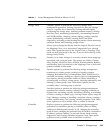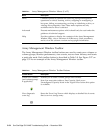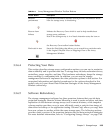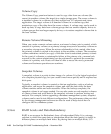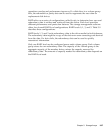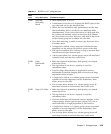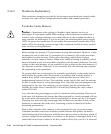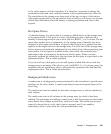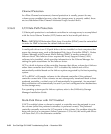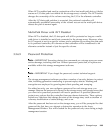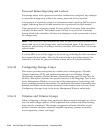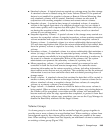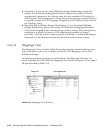
Chapter 3 Storage Arrays 3-61
to the cache memory of both controllers. It is, therefore, important to change the
command module and array module batteries at the recommended time intervals.
The controllers in the storage array keep track of the age (in days) of the battery.
After replacing the battery, the age must be reset so that you will receive an accurate
critical alert notification when the battery is nearing expiration and when it has
expired.
Hot Spare Drives
A valuable strategy to protect data is to assign available drives in the storage array
as hot spare drives. A hot spare is a drive, containing no data, which acts as a
standby in the storage array in case a drive fails in a RAID 1, 3, or 5 volume. The hot
spare adds another level of redundancy to the storage array. Generally, the drive
assigned as a hot spare should have a capacity that is equal to or greater than the
capacity of the largest drive on the storage array. If a drive fails in the storage array,
the hot spare is automatically substituted for the failed drive without requiring user
intervention. If a hot spare is available when a drive fails, the controller uses
redundancy data to reconstruct the data onto the hot spare. When you have
physically replaced the failed drive, the data from the hot spare is copied back to the
replacement drive. This is called copyback.
If you do not have a hot spare, you can still replace a failed disk drive while the
storage array is operating. If the drive is part of a RAID 1, 3, or 5 volume group, the
controller will use redundancy data to automatically reconstruct the data onto the
replacement drive. This is called reconstruction.
Background Media Scan
A media scan is a background process performed by the controllers to provide error
detection on the drive media. A media scan detects errors and reports them to the
Event Log.
The media scan must be enabled for the entire storage array as well as enabled on
each volume.
The media scan runs on all volumes in the storage array for which it has been
enabled. The advantage of enabling a media scan is that the process can find media
errors before they disrupt normal drive reads and writes. The media scan process
scans all volume data to verify that it can be accessed, and if you enable a
redundancy check, it also scans the volume redundancy data.



